These are all of America’s air-launched precision-guided munitions
- By Stavros Atlamazoglou
Share This Article
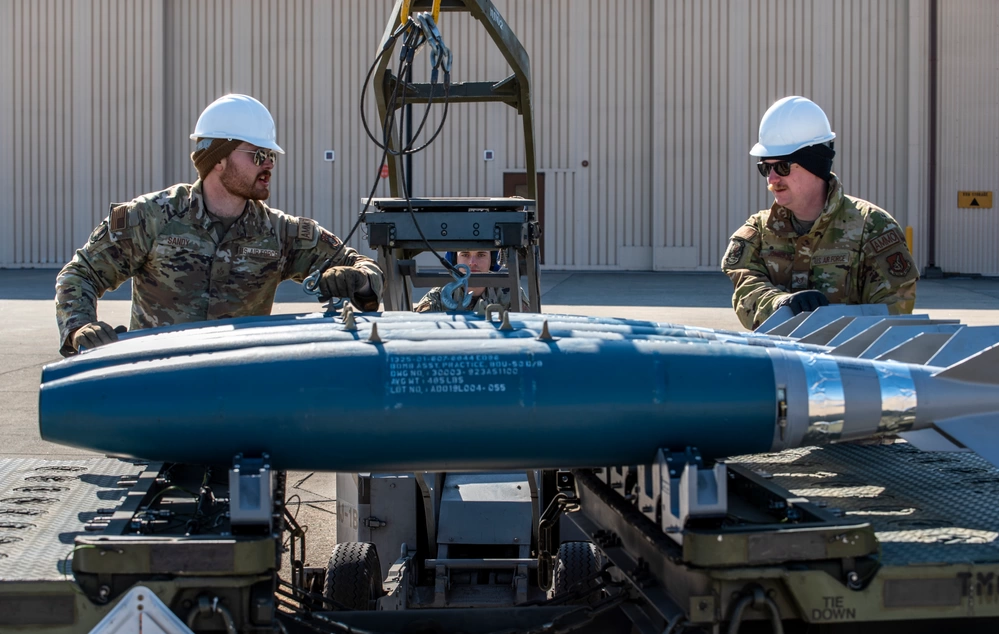
The U.S. military is the largest organization in the world, with over 1.3 million troops in active service and hundreds of thousands of reservists. In addition, it operates tens of thousands of warships, aircraft, combat vehicles, and other weapon systems.
Among the most advanced weapon systems in the U.S. military’s arsenal are precision-guided munitions. These air-to-air, air-to-surface, surface-to-air, and surface-to-surface munitions are the go-to choice for military commanders when engaging targets on the ground, sea, and air.
What follows is an introduction to each air-launched precision-guided munition in the U.S. military’s arsenal.
To begin with, we need a working definition of “precision-guided munition.” According to the Department of Defense, a precision-guided munition is a “guided weapon intended to destroy a point target and minimize collateral damage.” These weapons are designed to take out adversary – usually high-value – targets with precision, while ensuring that collateral damage remains minimal. Precision-guided munitions also have the ability to adjust course mid-flight, correcting for targeting error or adverse weather.
Unguided munitions, on the other hand, do not have such capabilities and, once fired, are unleashed toward the general area of their target.
Air-to-air precision munitions
Advanced Medium-Range Air-to-Air Missile (AMRAAM)
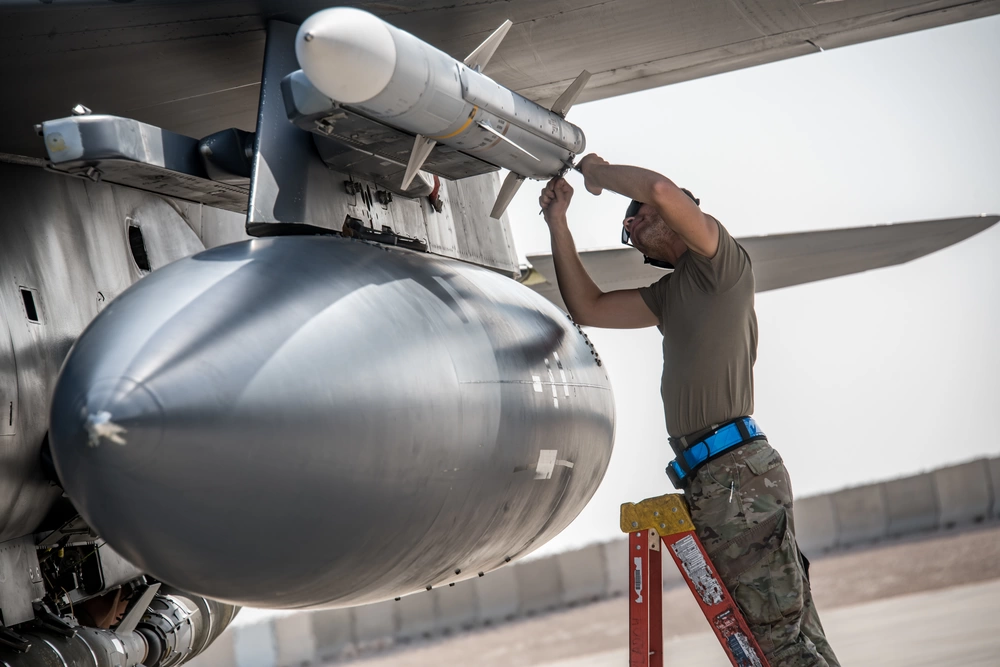
The AIM-120 AMRAAM is a beyond-visual-range air-to-air missile used by the Navy, Air Force, and Marine Corps. The latest version of the missile, the AIM-120D3, has a maximum unclassified range of approximately 100 miles, thus, the munition is ideal for engaging enemy aircraft at long distances. (A weapon’s classified range is longer than its unclassified one.)
However, the Pentagon plans to replace the munition with the AIM-260 Joint Advanced Tactical Missile (JATM).
Air Intercept Missile-9X (AIM-9X)
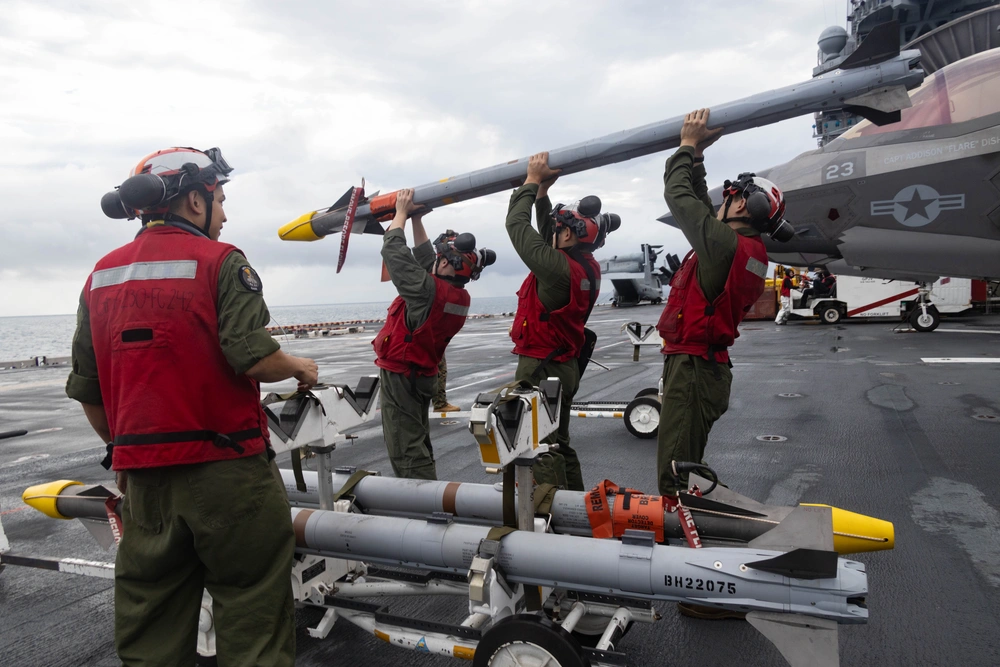
The AIM-9 Sidewinder is the U.S. military’s go-to air-to-air missile for dogfights. Designed by the Navy and adopted by the Air Force and Marine Corps, the AIM-9 is light and highly maneuverable. The maximum unclassified range of the AIM-9X, the latest version of the munition, is approximately 22 miles. The munition, however, can also hit targets as close as half a mile away.
Related: Smithsonian receives F-15 jet with a special history
Air-to-surface precision munitions
AGM-88 HARM
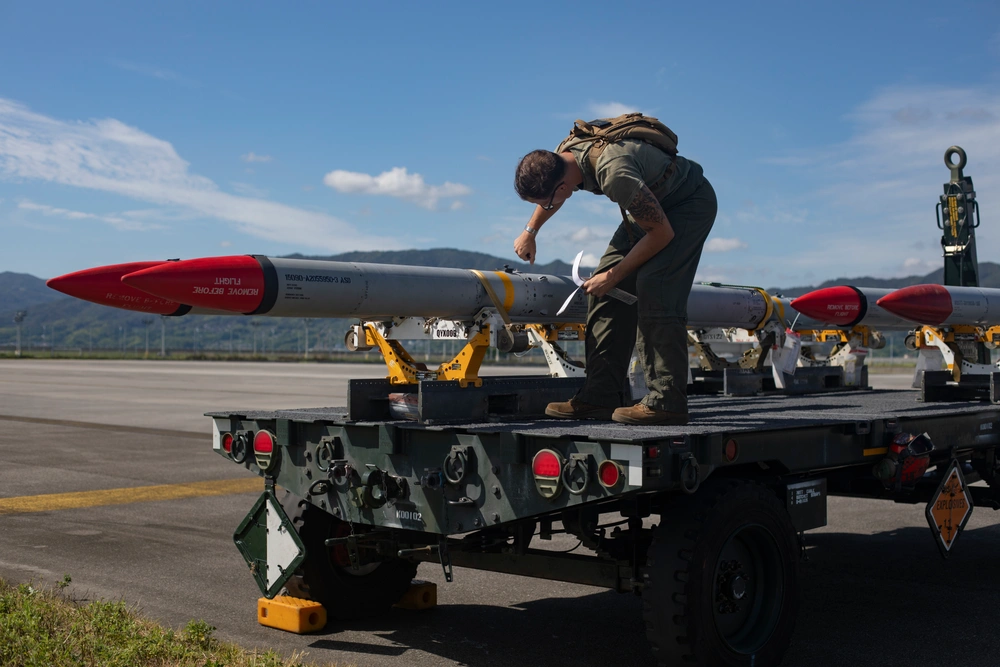
The AGM-88 HARM is the U.S. military’s go-to missile for electronic warfare. This is an air-launched ground attack missile designed to target and destroy enemy radar installations and air defenses. The AGM-88 HARM was a Navy-led program and the missile is also used by the Air Force and Marine Corps. The Ukrainian military has been using the munition against Russian air defenses with good results.
Joint Air-to-Ground Missile (JAGM)
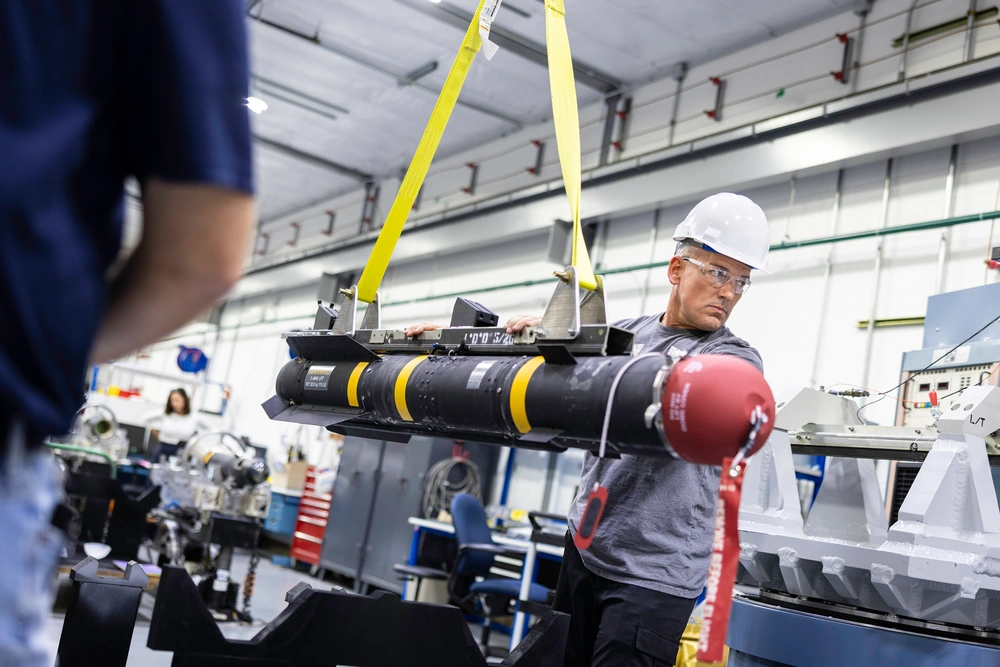
The AGM-179 JAGM is an air-to-ground guided missile designed mainly for attack helicopters and unmanned aerial systems. This precision-guided munition is distinct from the others mentioned above due to the fact that it is an Army-led program – the Army operates thousands of attack and transport helicopters. The AGM-179 used technology and parts of the AGM-114R Hellfire missile but has an upgraded seeker. It has an unclassified maximum range of around 310 miles.
Related: Meet the new special operations MH-47G Chinook helicopter
Joint Air-to-Surface Standoff Missile (JASSM)
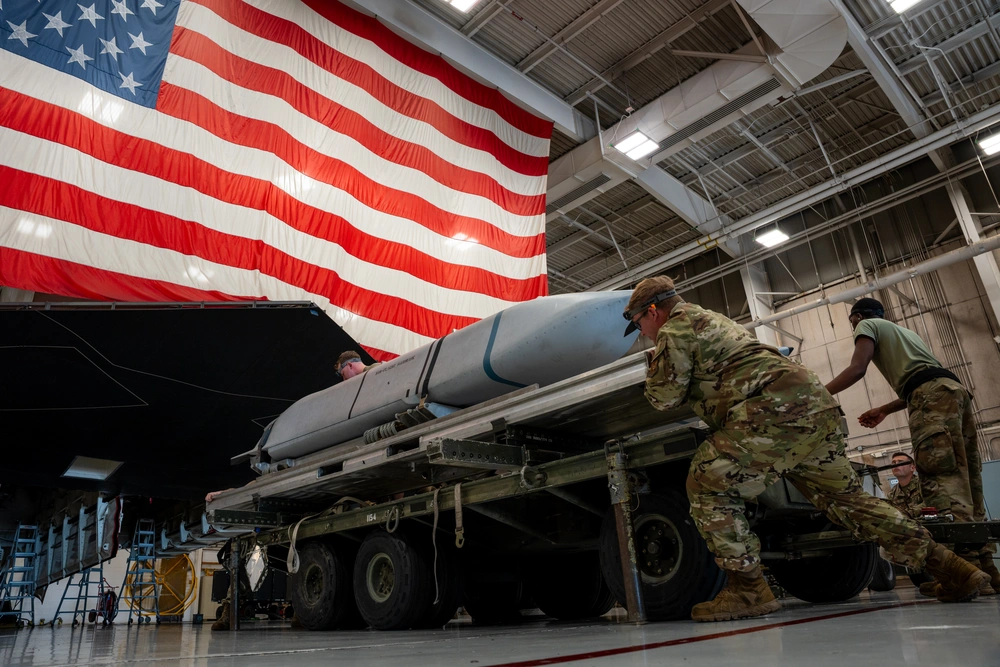
The AGM-158 JASSM is a family of air-launched cruise missiles with different range capabilities. The munition can be fired from fighter jets and strategic bombers. It is designed to bypass adversary air defenses through its low-observability characteristics. Depending on the version of the munition, the AGM-158 JASSM has a maximum range of almost 600 miles and carries a 1,000lbs warhead.
Joint Direct Attack Munition (JDAM)
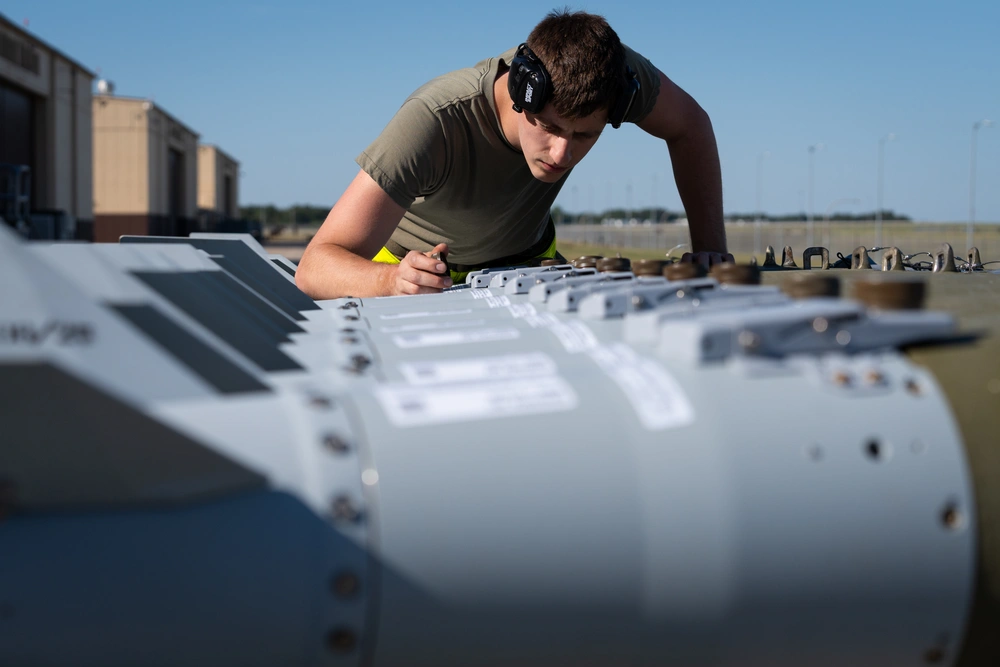
One of the most widely-used precision-guided munitions in the U.S. military, the JDAM is not a munition in itself. Rather, the JDAM is a bolt-on guidance kit that can be outfitted to 500-, 1,000-, and 2,000-pound unguided bombs, turning them into “smart bombs.” JDAMs have been in use since 1999.
Long Range Anti-Ship Missile (LRASM)
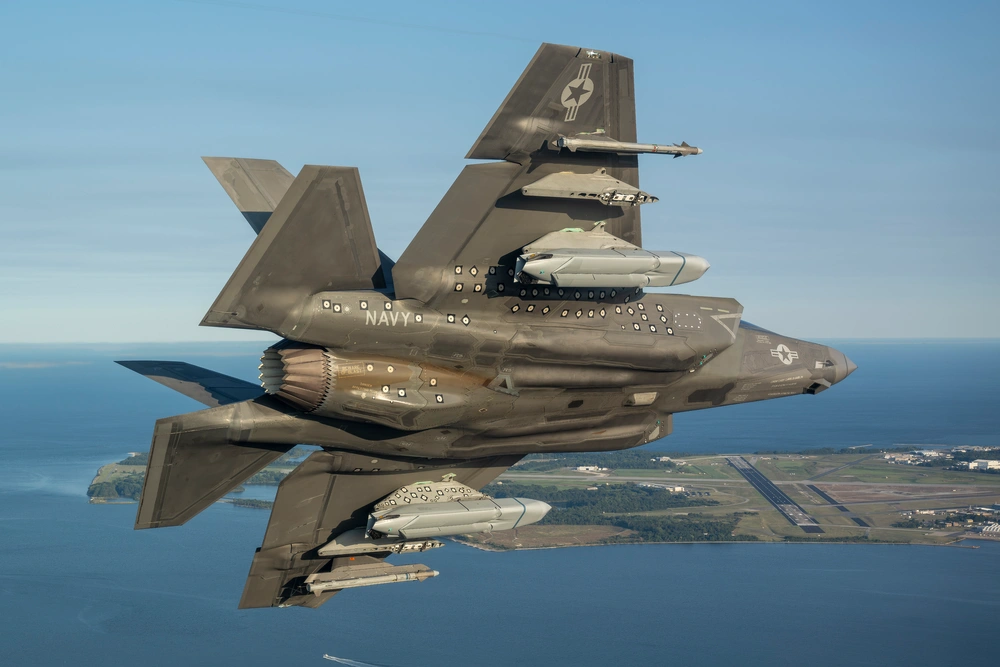
The AGM-158C LRASM is an air-launched anti-ship cruise missile. Designed by the Navy to take out Chinese warships, the AGM-158 LRASM has an unclassified maximum range of approximately 575 miles and carries a 1,000lbs warhead.
Related: Why the Chinese military uses ridiculously blue uniforms
Massive Ordnance Penetrator (MOP)

The GBU-57 is the largest non-nuclear munition in the U.S. military’s arsenal. The 30,000 lbs precision-guided bomb is designed to penetrate heavily armed targets, including underground targets. The Air Force dropped several MOPs from B-2 Spirit stealth bombers during the attack on Iran’s nuclear program in June. The Air Force plans to replace the bomb with the “Next Generation Penetrator.”
Small Diameter Bomb I and II (SDB)
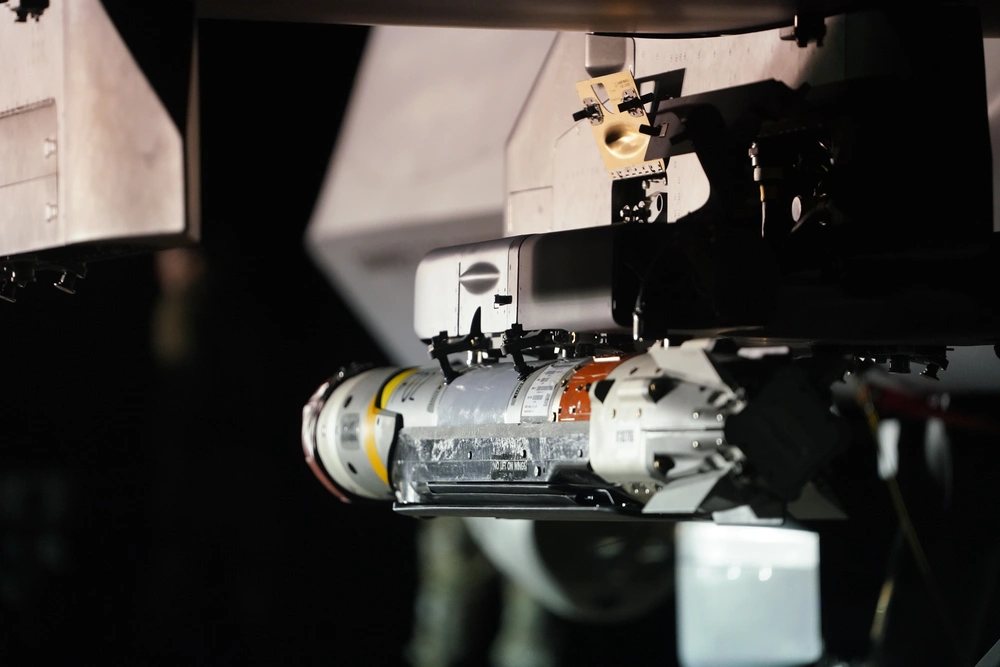
Finally, the SDB Increment I and II are air-launched guided bombs designed to take out stationary and mobile targets. They have a range of approximately 50 miles and can carry up to four 250 lbs guided air-to-surface munitions.
Feature Image: U.S. Air Force Staff Sgt. Joshua Sandy, 51st Munitions Squadron (MUNS) munitions inspector, and Staff Sgt. Zachary Johnson, 51st MUNS precision missiles crew chief, guide a MJ-1C weapons loader driven by Staff Sgt. Christian Mathes, 51st MUNS maintenance supervisor, during a training event at Daegu Air Base, Republic of Korea, Jan. 30, 2023.(U.S. Air Force photo by Staff Sgt. Dwane R. Young)
Read more from Sandboxx News
- William Pitsenbarger: The commando who died so that others could live
- A brief history of hand-to-hand combat training in the US military
- The B-52 was designed in a hotel room over a weekend (and will probably fly for 100 years)
- Russia has been trying a tactic of ‘a thousand cuts’ in Ukraine
- ST Idaho: The Special Forces team that vanished in the jungle
Related Posts
Sandboxx News Merch
-

‘AirPower’ Classic Hoodie
$46.00 – $48.00Price range: $46.00 through $48.00 Select options This product has multiple variants. The options may be chosen on the product page -

‘Sandboxx News’ Trucker Cap
$27.00 Select options This product has multiple variants. The options may be chosen on the product page -
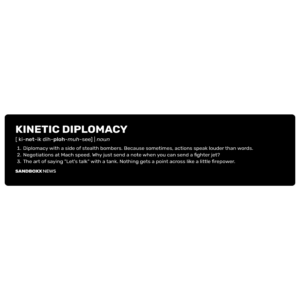
‘Kinetic Diplomacy’ Bumper Sticker (Black)
$8.00 Add to cart
Stavros Atlamazoglou
Greek Army veteran (National service with 575th Marines Battalion and Army HQ). Johns Hopkins University. You will usually find him on the top of a mountain admiring the view and wondering how he got there.
Related to: Airpower, Gear & Tech

William Pitsenbarger: The commando who died so that others could live
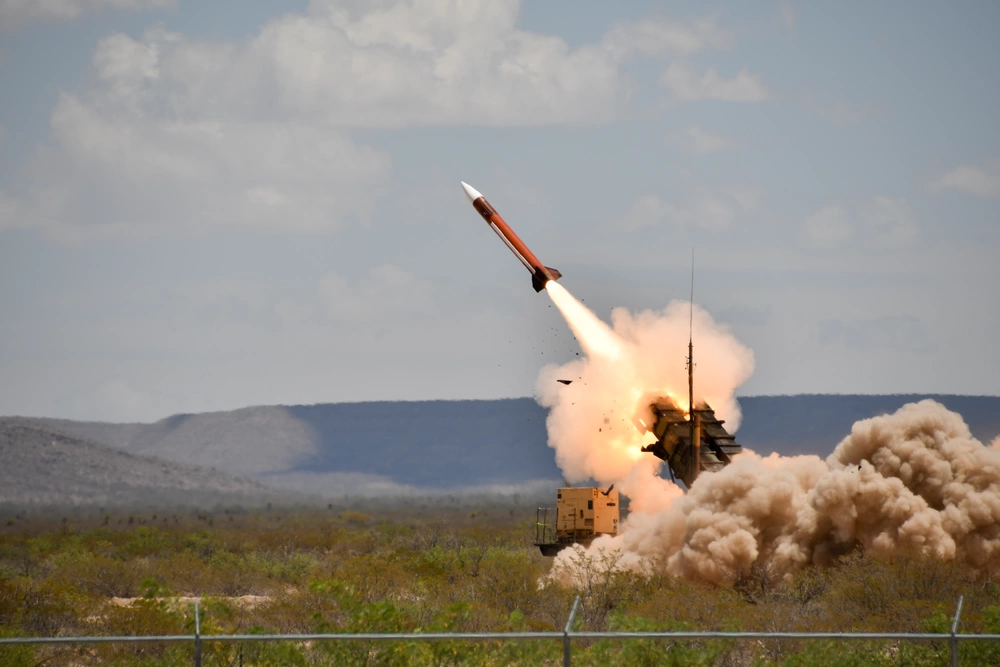
Israeli Patriot air defense systems operate in Ukraine, according to Zelensky
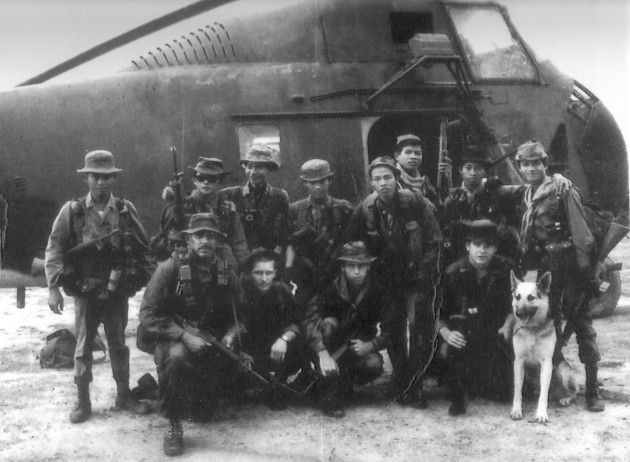
ST Idaho: The Special Forces team that vanished in the jungle
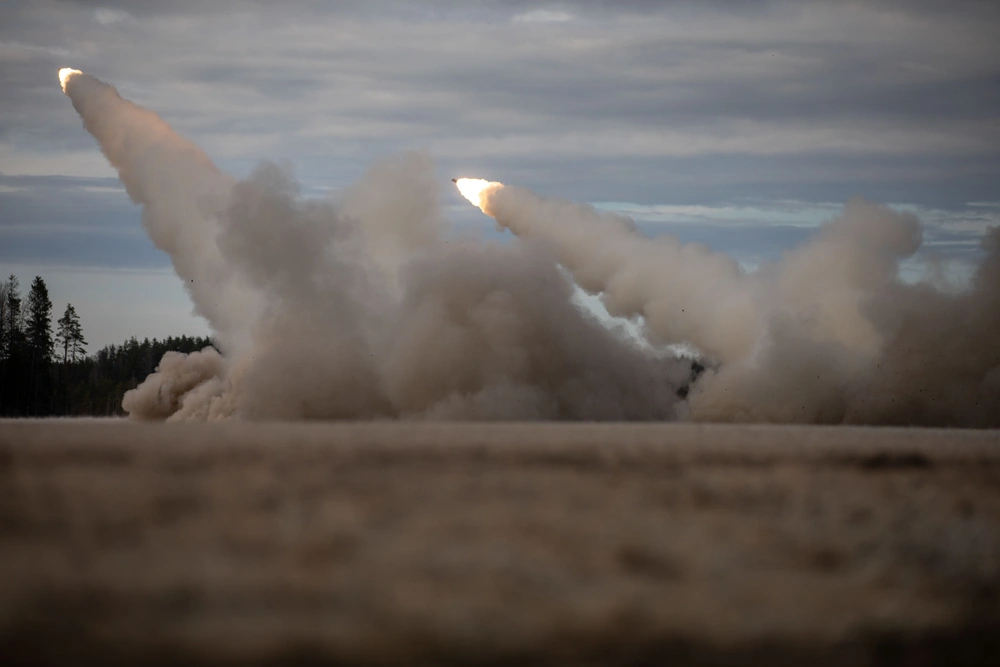
These are all of the US military’s surface-launched precision munitions
Sandboxx News
-

‘Sandboxx News’ Trucker Cap
$27.00 Select options This product has multiple variants. The options may be chosen on the product page -

‘AirPower’ Classic Hoodie
$46.00 – $48.00Price range: $46.00 through $48.00 Select options This product has multiple variants. The options may be chosen on the product page -

‘AirPower’ Golf Rope Hat
$31.00 Select options This product has multiple variants. The options may be chosen on the product page -

‘Sandboxx News’ Dad Hat
$27.00 Select options This product has multiple variants. The options may be chosen on the product page
